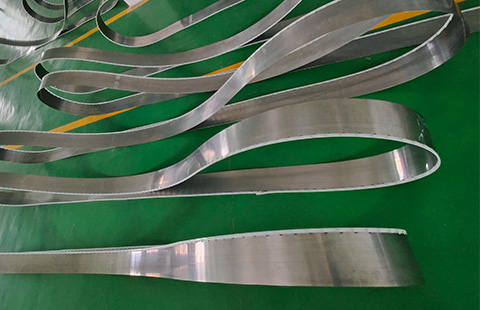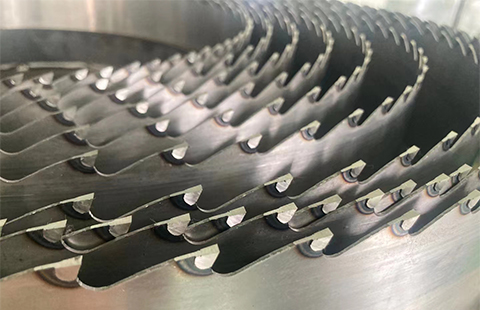When it comes to cutting wood, the saw blade is the heart of the matter. Selecting the optimal blade design and materials for your specific application and workflow is crucial for safety, efficiency and cost-effectiveness. As a leading saw blade manufacturer, we get many questions on when and why to use our stellite tipped blades. This blog will provide a comprehensive guide on choosing between different saw blade materials and options for woodworking.

Guidelines for Choosing the Right Saw and Blade for Different Woodworking Scenarios
In woodworking, the decision between a bandsaw and a circular saw often hinges on the specific task on hand.
For Raw Wood Processing Plants
For hardwoods thicker than 2 inches, it's recommended to use wide-toothed circular saw blades to prevent overheating.
Light softwoods can be efficiently cut using narrow-toothed blades, enhancing the cutting speed.
For severely bent raw wood, circular saws with a continuous cycle are ideal for straight-line cutting.
For Furniture Factories
For straight plank longitudinal cutting, narrow-toothed bandsaw blades are the go-to choice.
Handheld circular saws are best suited for intricate shape cutting.
For engineered wood boards, carbide-tipped blades are preferred due to their burn resistance.
Universal Recommendations for All Applications
For high-volume continuous cutting, stellite-tipped blades are the top choice, offering enhanced wear resistance.
Stellite blades are best paired with industrial-grade saw machines that have a robust spindle power.
For intermittent, low-frequency cuts, carbide-tipped blades can be an alternative.
For smaller diameter blades, opting for stellite welded saw teeth segments can boost wear resistance in specific sections.
The Superiority of Stellite in High-Volume Production
For woodworking shops handling large volumes, stellite-tipped blades emerge as the top choice, especially when ripping dense hardwoods. Comprising cobalt, chromium, and tungsten, Stellite offers a durable edge that ensures smooth cuts. Its low-friction surface facilitates swift feed rates, even through hardwoods like oak or walnut, without the risk of overheating.
Debunking Myths: Stellite's Impact Resistance
Contrary to popular belief, stellite-tipped blades are not more prone to fracturing upon encountering hidden nails or knots in reclaimed wood. Stellite's cobalt-chromium matrix structure imparts exceptional impact resistance, making these blades more resilient than tungsten carbide, especially in abrasive conditions. This ensures that stellite-tipped blades remain reliable, even when working with potentially contaminated recycled stocks. Our specialized stellite alloy formulation further enhances blade longevity by preventing chipping while maintaining sharpness.
When to Consider Carbide-Tipped Blades
For occasional cuts or less frequent usage, carbide-tipped blades might offer a more cost-effective solution without compromising on longevity. Their corrosion-resistant edge ensures a high-quality cut, especially in engineered boards like plywood.
The Economics of Blade Maintenance: Welding vs. Replacement
When a stellite blade eventually shows signs of wear, you face a choice: invest in a new blade or weld new stellite teeth onto the existing one. The latter is not only more economical but also quicker. We supply stellite saw teeth to rejuvenate your blade's performance.
The Art of Welding: Choosing the Right Rods
Selecting the appropriate welding rods is crucial when repairing stellite-tipped blades. While silver alloy rods simplify the welding process for intricate tooth designs, cobalt-based stellite rods are our top recommendation for ensuring a robust bond with minimal hardness reduction.
Conclusion: Optimizing Your Woodworking Operations
This guide aims to streamline your decision-making process in choosing the right saw blade material, from stellite to carbide, and understanding the nuances of welding. For tailored advice on blade selection based on your specific needs, don't hesitate to contact us!



